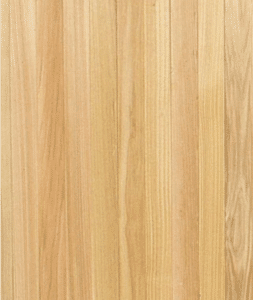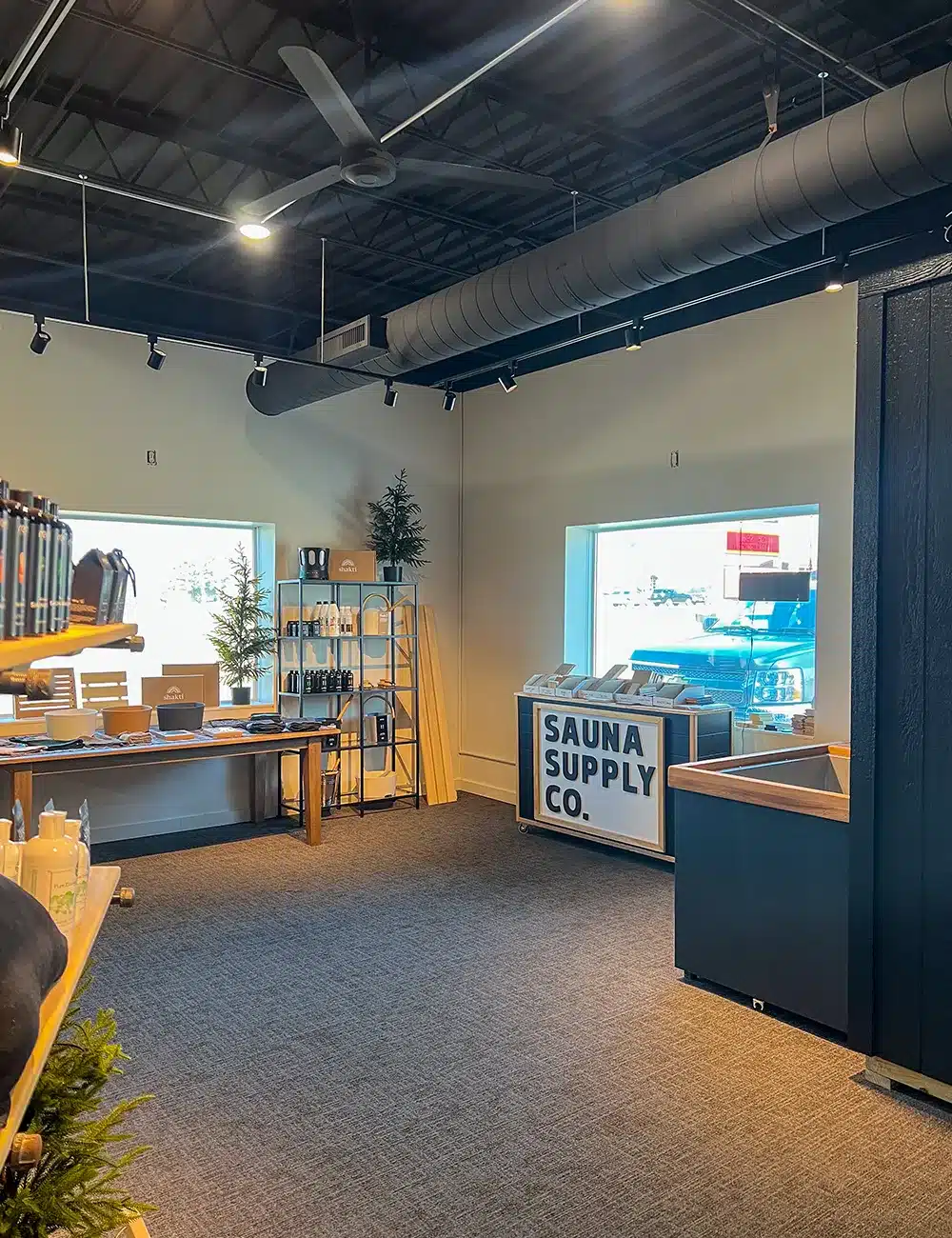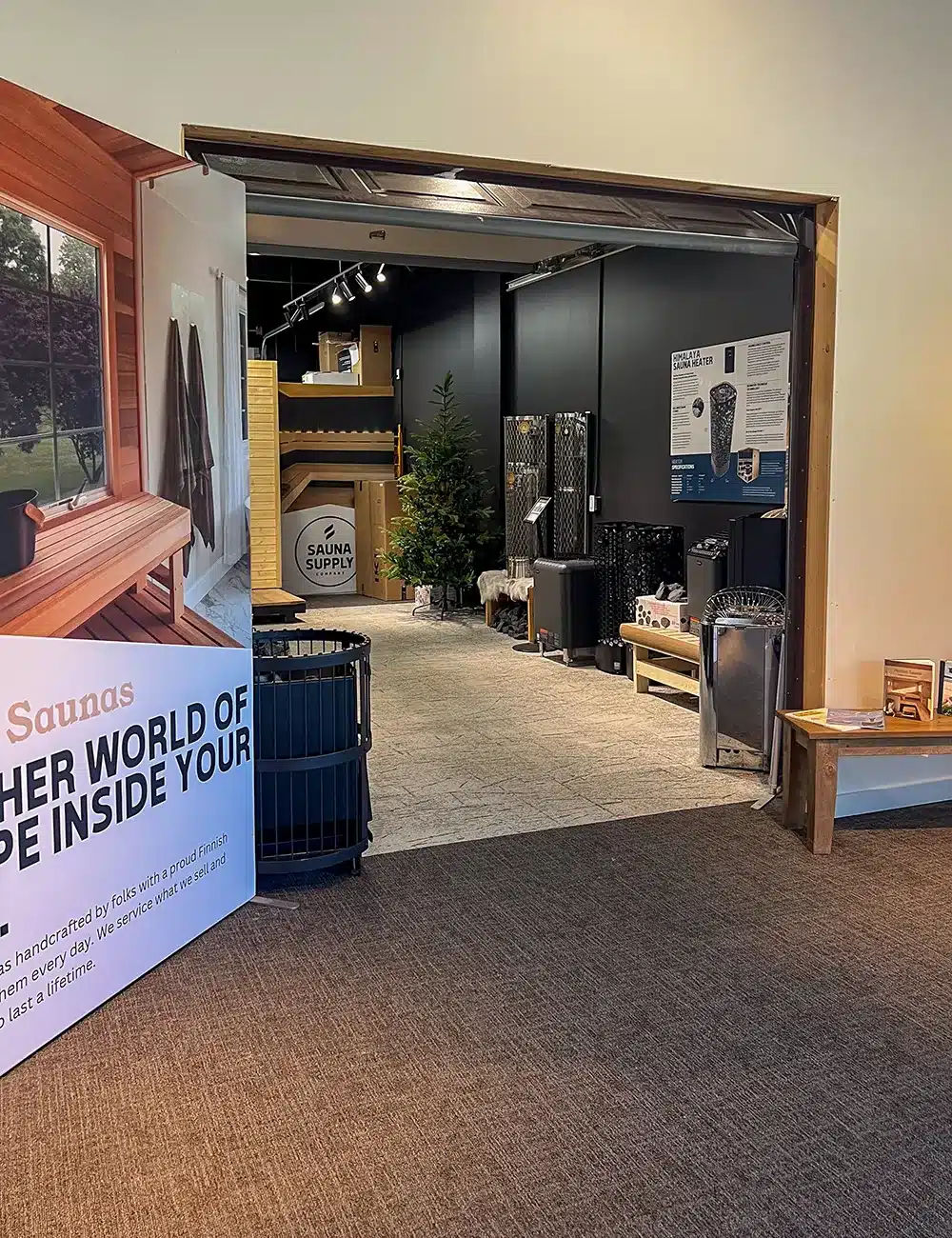Sauna, what exactly is it and what does it mean? A sauna is room that is heated up with stove for the purpose of health and relaxation. The stove can be electrical, powered by heating elements similar to an electric oven. The stove can also be wood fire. The third source of heat is the increasingly popular infrared heat.
Traditional electrical sauna heater. The elements are placed in a heating unit in the sauna room with sauna rocks placed in between the elements. The rocks become hot when the stove turns on and heats the room. The purpose of the rocks is to have water thrown onto them to produce a steam. This steam raises the humidity in the room, making it feel hotter. With a wood fire stove, the rocks are placed above and around the fire, which is surrounded by metal. The steam is a critical ritual in taking a sauna.


Infrared Heater. Infrared heat is given off by panels on the walls and behind the calves, surrounding you as you sit in the sauna room. Finnleo heating panels use proprietary/patented infrared heating technology, combining its CarbonFlex heaters with its exclusive Pure Infra Low EMR and Low EF technology to provide the lowest possible exposure to EMR and EF. The waves penetrate the body and heat you up from the inside of the body.

The Materials. A sauna room should first be framed and insulated in the walls and ceiling. Then there is an aluminum foil vapor barrier placed on the walls and ceiling to help reflect and hold heat in the room. Over the foil vapor barrier, you install wood tongue and groove. It is untreated wood, you don’t want any chemicals exposed and giving off any fumes from the heat. The wood species should be chosen to hold up well in a sauna environment. Finnleo options include the popular Clear Western Red Cedar, Canadian Hemlock, Nordic White Spruce, and a recently developed birch plywood called Taika (it treated with a specially designed stain that is safe in a sauna room, it is a black color).
Tongue and Groove (walls and ceiling) :
Clear Western Red Cedar : 



Benching and Backrest Materials. The wood used on benching should be without knots, as knots heat up in the sauna heat. All of the options are S4S (sanded four sides). Finnleo benching wood is typically paired as following (to match the tongue and groove on walls and ceiling). Cedar with Cedar, Hemlock with Hemlock, Abachi or Aspen benching with Nordic Spruce, and Hemlock with Taika. The bench is constructed with 1/4″ gap between each piece, to allow the wood to dry the sweat from sitting on it.
When you sit in a sauna, it raises your heart rate and you sweat. This produces many health benefits. Especially when a sauna is taken for 15-20 minutes 4-7 times a week.
- It improves cardiovascular health. With the high temperatures of a sauna, the skin heats up and core body temperature rises. As this happens, the blood vessels near the skin dilate and cardiac output & circulation increase. Medical research has told us that the heart rate can rise from 60-70 bpm (beats per minute) to 110-120 bpm in the sauna (140-150 bpm with more intensive bathing), and can often sink to below normal after the cooling off stage. Regular sauna usage has been shown to reduce the risk of all-cause mortality and fatal cardiac incidents along with reduced risk of stroke and hypertension.
- Sauna reduces stress. Sauna reduces the levels of cortisol in our blood, and stimulates the production of serotonin. Serotonin is our “happy hormone” that makes us feel good.
- Aids in muscle recovery after working out. It does this by relaxing the muscles and soothing aches and pains. The heat of the sauna opens the blood vessels, accelerating the healing process of muscles.
- Flushes toxins. Sauna reduces levels of lead, copper, zinc, nickel, mercury and chemical via sweat.
- Improves brain health. Regular sauna use has shown to lower the risk for both Alzheimer’s & Dementia.
- Better sleep. In addition to the release of endorphins, body temperatures that become elevated in the late evening, fall at bedtime. This slow, relaxing decline in endorphins is key in facilitating sleep.
- Fights illness. German sauna medical research shows that saunas were able to significantly reduce the incidences of colds and influenza among study participants. When the body sits in the heat of a sauna and steam, it produces white blood cells more rapidly, which in turn helps to fight illnesses and helps to kill viruses. Also, saunas can relieve the uncomfortable symptoms of sinus congestion from colds or allergies. Pro tip – mix some Eucalyptus oil in the steam water when feeling stuffy.
- Burns Calories. “A moderately conditioned person can easily sweat off 500 grams in a sauna in a single session, consuming nearly 300 calories in the process.” The body consumes said calories due to the acceleration of heart activity (see section 2 on Heart Health). As heart activity increases and as these processes demand more oxygen, the body begins to convert more calories into usable energy.













